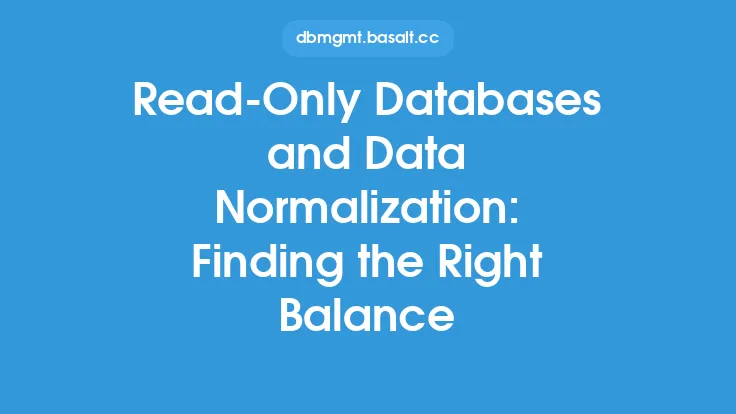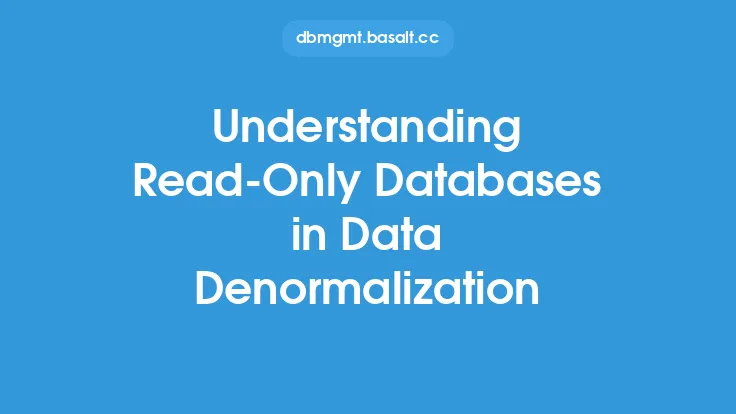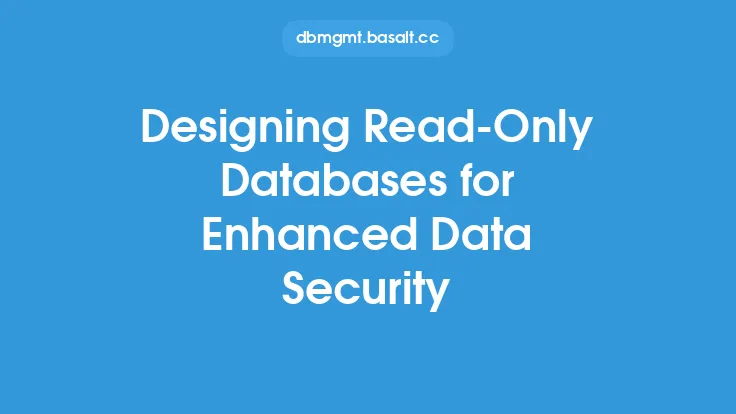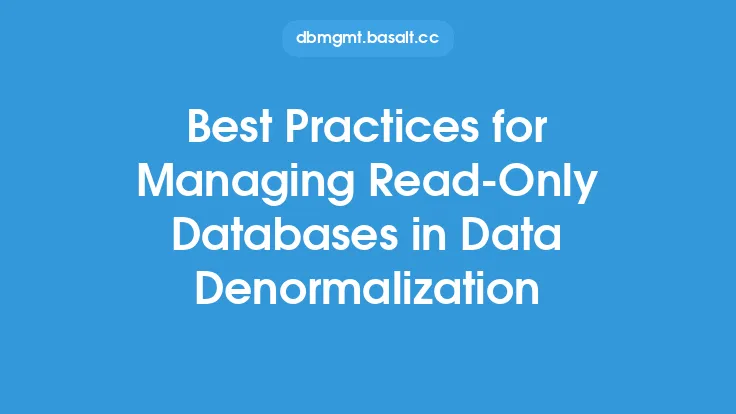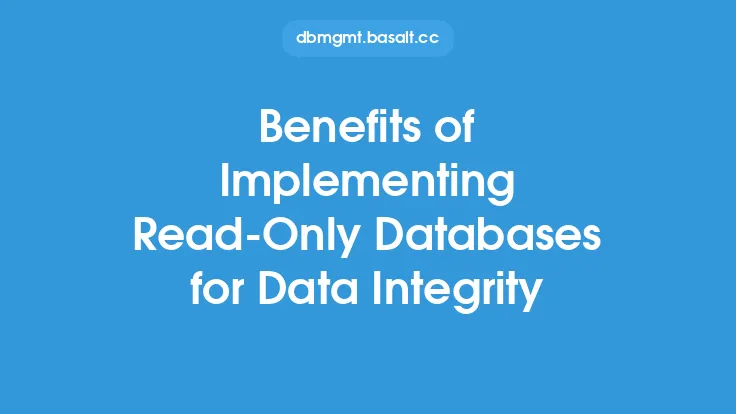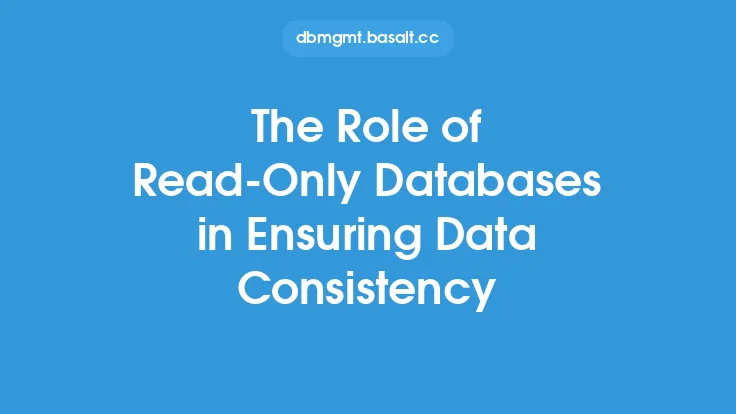In the realm of data management, efficiency is key to ensuring that systems operate smoothly and effectively. One crucial aspect of data management is data retrieval, which involves accessing and fetching data from databases. To improve data retrieval efficiency, read-only databases have emerged as a viable solution. These databases are designed to provide fast and reliable data access, while minimizing the risk of data corruption or modification. In this article, we will delve into the world of read-only databases, exploring their architecture, benefits, and implementation strategies.
Introduction to Read-Only Databases
Read-only databases are specialized databases that allow data to be retrieved, but not modified. This means that once data is written to a read-only database, it cannot be altered or deleted. This approach provides several benefits, including improved data integrity, reduced latency, and enhanced security. Read-only databases are particularly useful in applications where data is primarily used for reporting, analytics, or other read-intensive workloads.
Architecture of Read-Only Databases
The architecture of read-only databases is designed to optimize data retrieval performance. Typically, a read-only database consists of a single, immutable copy of the data, which is stored on a disk or other non-volatile storage medium. This data is then indexed and cached to facilitate fast querying and retrieval. To ensure data consistency, read-only databases often employ a variety of techniques, such as snapshotting, replication, and checksumming. These techniques help to prevent data corruption and ensure that the data remains accurate and up-to-date.
Benefits of Read-Only Databases
Read-only databases offer several benefits that make them an attractive solution for data-intensive applications. One of the primary benefits is improved data integrity. By preventing data modification, read-only databases reduce the risk of data corruption or accidental deletion. Additionally, read-only databases provide faster query performance, as the database does not need to worry about locking or concurrency control. This makes them ideal for applications that require fast and reliable data access, such as real-time analytics or reporting.
Implementation Strategies
Implementing a read-only database requires careful planning and consideration of several factors, including data volume, query patterns, and performance requirements. One common approach is to use a combination of relational and NoSQL databases. Relational databases are well-suited for storing structured data, while NoSQL databases are ideal for handling large volumes of unstructured or semi-structured data. Another approach is to use a cloud-based read-only database service, which provides a scalable and managed solution for data storage and retrieval.
Data Denormalization Techniques
Read-only databases often employ data denormalization techniques to improve query performance. Data denormalization involves storing data in a way that is optimized for querying, rather than storage efficiency. This can involve techniques such as data replication, data aggregation, and data caching. By denormalizing data, read-only databases can reduce the number of joins and queries required to retrieve data, resulting in faster query performance and improved overall efficiency.
Query Optimization
Query optimization is a critical aspect of read-only database performance. To optimize queries, database administrators can use a variety of techniques, including indexing, caching, and query rewriting. Indexing involves creating data structures that facilitate fast querying, while caching involves storing frequently accessed data in memory. Query rewriting involves optimizing query syntax and structure to reduce the number of joins and subqueries required. By optimizing queries, read-only databases can provide fast and reliable data access, even in the face of complex and demanding workloads.
Use Cases for Read-Only Databases
Read-only databases are suitable for a wide range of applications, including data warehousing, business intelligence, and real-time analytics. They are particularly useful in applications where data is primarily used for reporting or analytics, rather than transactional processing. For example, a company might use a read-only database to store historical sales data, which can be used to generate reports and analyze trends. Similarly, a read-only database can be used to store sensor data from IoT devices, which can be used to monitor and analyze system performance.
Conclusion
In conclusion, read-only databases offer a powerful solution for improving data retrieval efficiency. By providing fast and reliable data access, while minimizing the risk of data corruption or modification, read-only databases are ideal for applications that require high-performance data access. Whether used in data warehousing, business intelligence, or real-time analytics, read-only databases provide a scalable and efficient solution for data-intensive workloads. By understanding the architecture, benefits, and implementation strategies of read-only databases, organizations can unlock the full potential of their data and drive business success.
